Whilst many of us would associate dolphins with the sea, and perhaps at a push, the occasional venture up from a river mouth, there are actually a number of species of dolphins that live only in rivers. These five (or potentially six, according to a recent study) are found in eight river basins in South America and Asia: the Amazon, Orinoco, Ganges, Indus, Yangtze, Irrawaddy (Myanmar), Mahakam (Indonesia) and the Mekong (Cambodia). They have adapted to living and hunting in muddy waters, and the Ganges and Indus river dolphin species are even blind and rely on echolocation.
Learn more about river dolphins, sometimes referred to as freshwater dolphins, in our expert guide by the WWF:
How many species of river dolphin are there?
There are five, possibly six, species of river dolphin found around the world:
- Amazon river dolphin (Inia geoffrensis)
- Tucuxi (Sotalia fluviatilis)
- Ganges river dolphin (Platanista gangetica gangetica) - possibly two distinct species the Ganges river dolphin (Platanista gangetica) and the Indus river dolphin (Platanista minor)
- Irrawaddy dolphin (Orcaella brevirostris)
- Yangtze finless porpoise (Neophocaena asiaeorientalis asiaeorientalis)
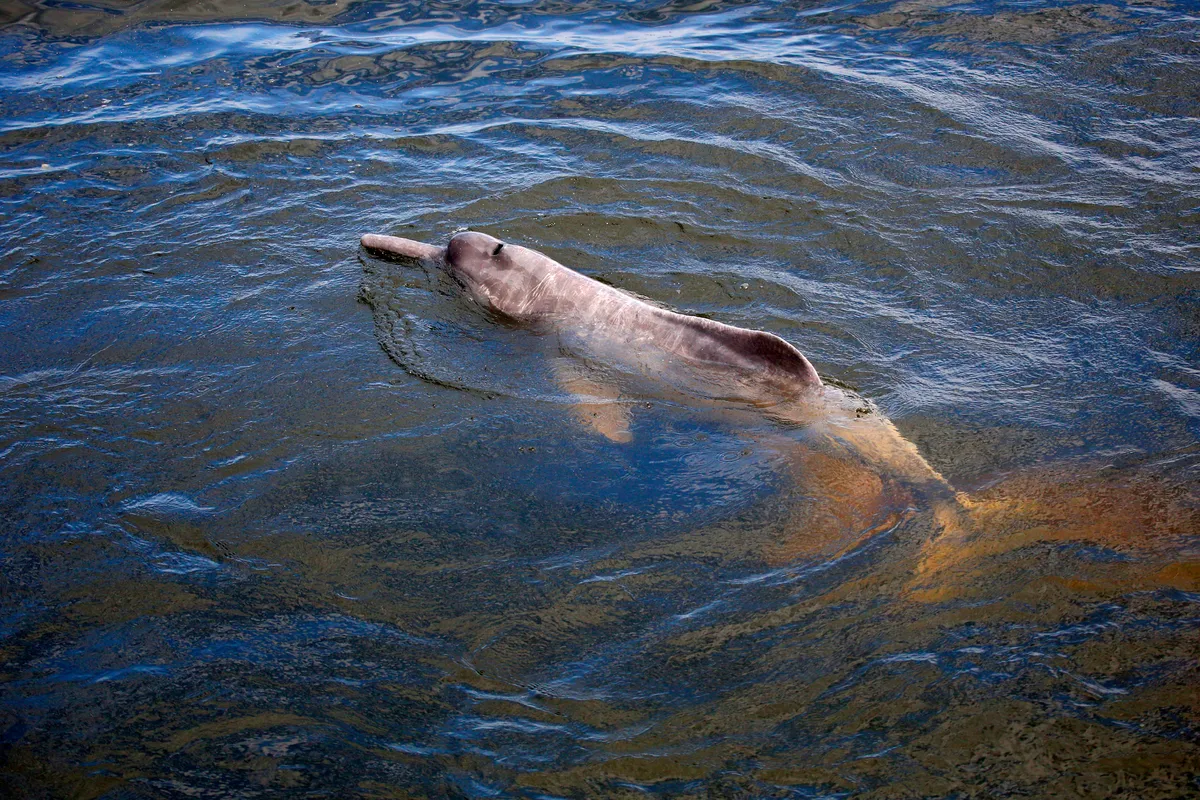
The pink Amazon river dolphin (Inia geoffrensis), is found in the Amazon and Orinoco River basins stretching through Colombia, Venezuela, Brazil, Bolivia, Peru, Ecuador and Guyana. Unlike other river dolphins, it has a flexible neck which allows it to move its head left and right. This seemingly small adaptation is important because it allows the species to more easily enter flooded forests to hunt and breed. The Amazon river dolphin also has a long snout, a rounded head and small dorsal fin. It is the largest species of river dolphin, with adult males reaching 185 kilograms in weight, and 2.5 metres in length.
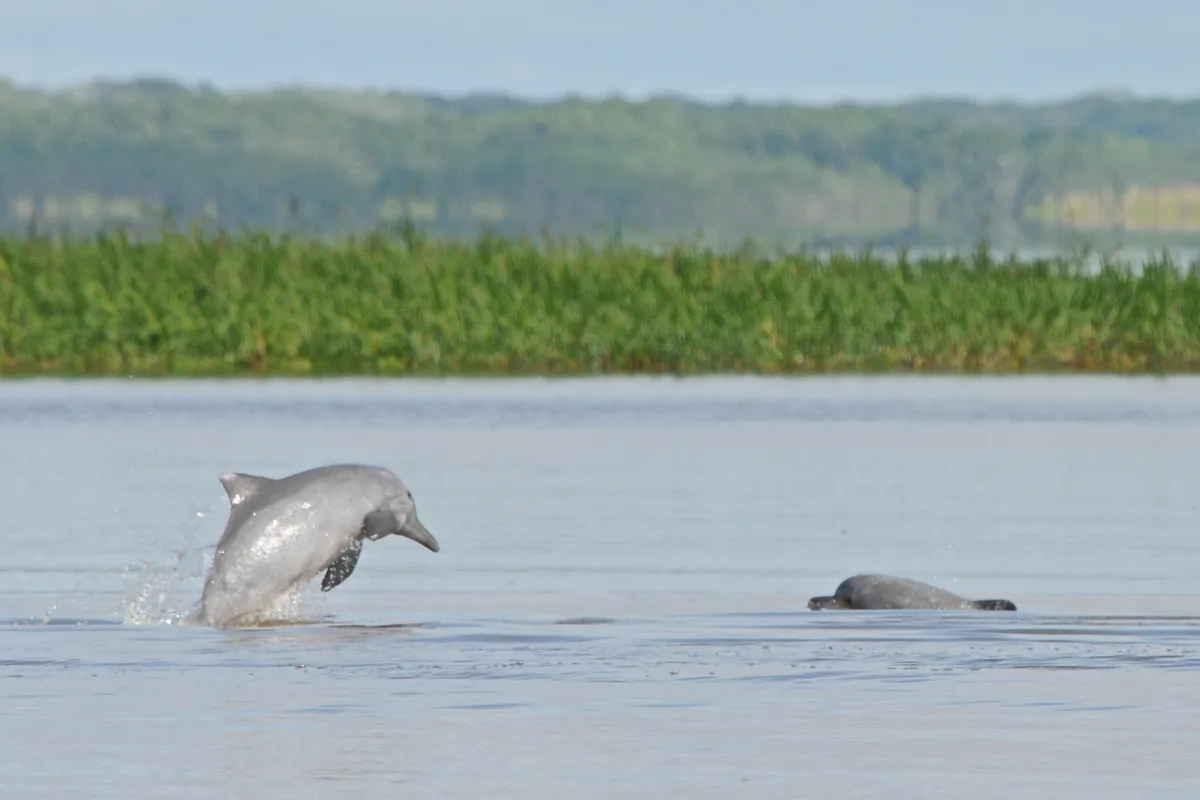
The Tucuxi river dolphin (Sotalia fluviatilis) is the smaller, jumping grey counterpart to the Amazon river dolphin and is also found in the Amazon River basin. Travelling in pods of about 10-15 they have a highly developed social structure. It looks more like its marine cousins, and just like them, the tucuxi jumps playfully out of the water - a beautiful sight.
The South Asian river dolphin consists of two subspecies, the Ganges and Indus river dolphins, although a new study has concluded that these dolphins are different enough to be considered as separate species, the Ganges river dolphin (Platanista gangetica) and the Indus river dolphin (Platanista minor).
There are only about 3200 Ganges river dolphins (Platanista gangetica gangetica) left in the world. The majority are found in India, and less than 100 in Nepal. It is essentially blind and relies on echolocation. It is the National Aquatic Animal of India.
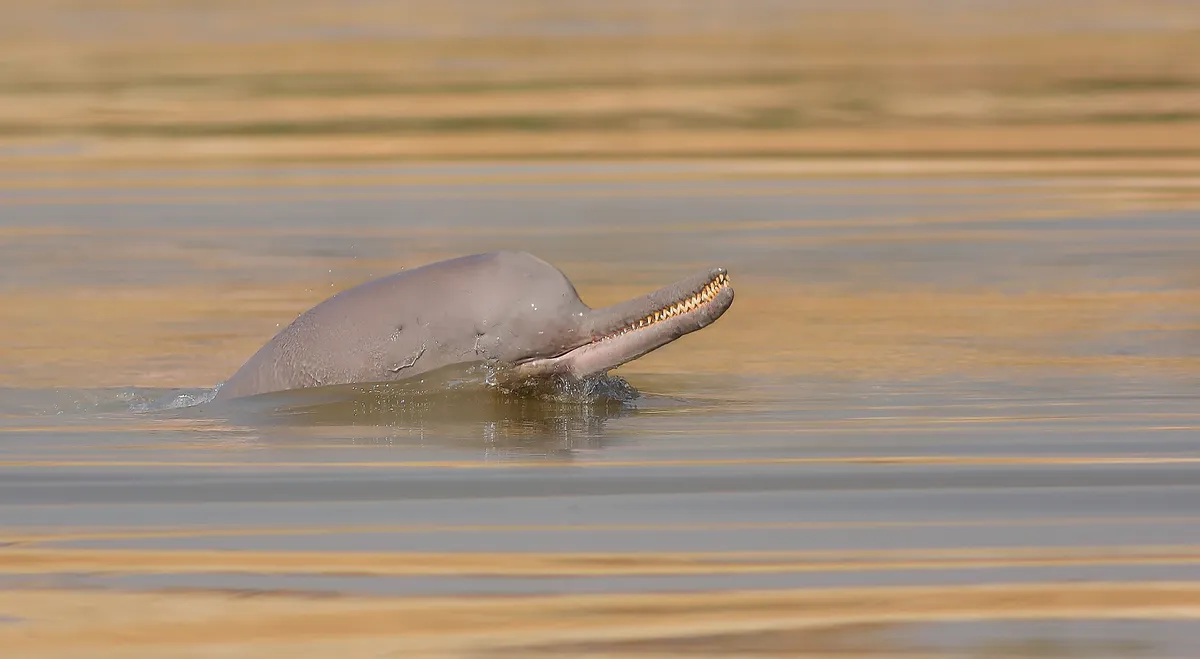
There are less than 2000 Indus river dolphins (Platanista gangetica minor) left in the world. They are found mostly in the lower parts of the Indus River in Pakistan, plus about 8 individuals in the Beas River in India. Following the construction of major irrigation systems their numbers declined dramatically and their distribution range was reduced by 80%. Most of the population is divided into isolated populations by six barrages without being able to migrate or spawn properly. The functionally blind species is adapted to live in the muddy river and relies on echolocation.

According to the latest census data released in October 2020, just 89 rare freshwater Irrawaddy dolphins (Orcaella brevirostris) survive in the Mekong River. Besides the Mekong (Cambodia), the Irrawaddy dolphin is also found in the Irrawaddy (Myanmar) and Mahakam (Indonesia) Rivers. The total number of Irrawaddy river dolphins in the world is estimated at only 250 individuals.
Featuring a bulging forehead and short beak, this elegant animal will pop its head out of the water to breathe, followed by its back - the tail is rarely seen. It herds fish into their hunting area by squirting streams of water up to 1.5 meters. Some sub-populations in Myanmar have developed a collaborative fishing strategy with local traditional fishermen, proving that people and wild animals can coexist in harmony.
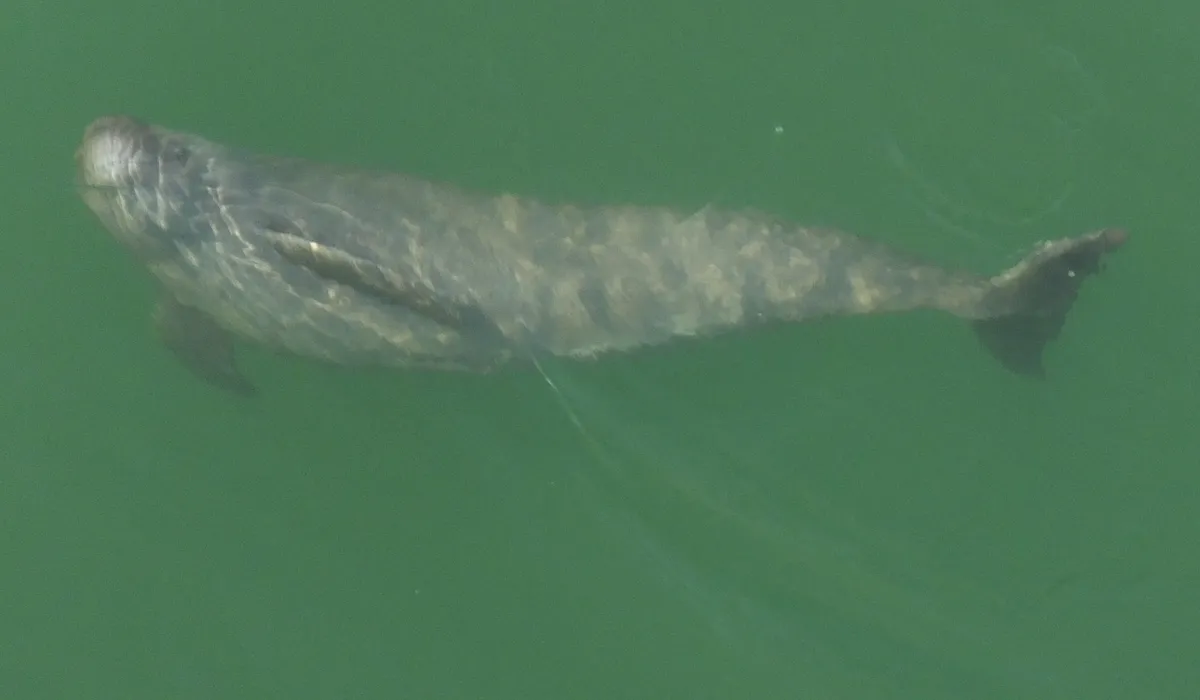
There are around 1000 smiling freshwater Yangtze finless porpoises (Neophocaena asiaeorientalis asiaeorientalis) alive today, of which 100 live in semi-natural reserves. The Yangtze finless porpoise, the only fresh water porpoise in the world, is known for its intelligence which is on par with that of a gorilla. At one point, this porpoise shared the waters with the Baiji dolphin (Lipotes vexillifer) . The Baiji or Yangtze river dolphin was last seen in 2002, and was declared functionally extinct in 2006.
Do river dolphins have local nicknames?
The Amazon river dolphin is also known as the “boto.”
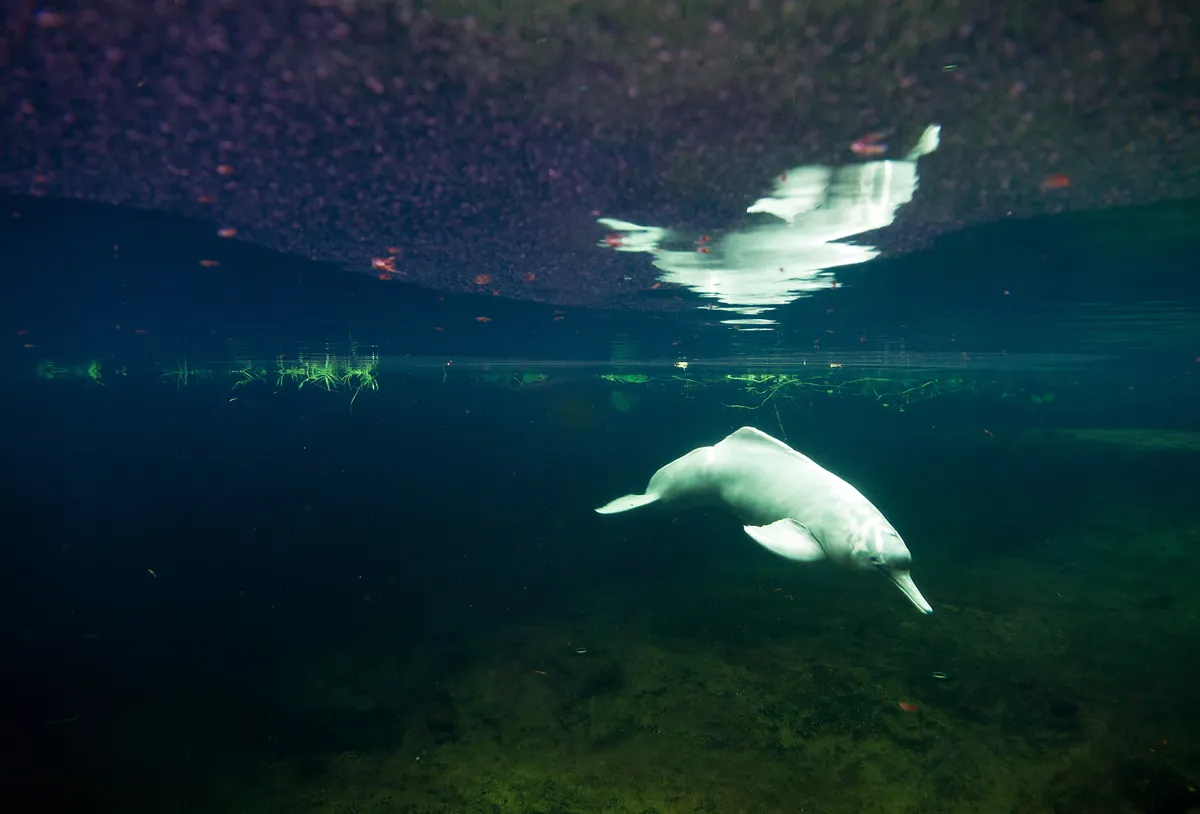
The Ganges river dolphin is known in India as “susu” after the noise the dolphin makes when it breathes, and called “swons” in Nepal. The Ganges river dolphin is also known as the “Tiger of the Ganges” for the role it plays as an ecosystem indicator species; much like a tiger does in a forest.
Why are river dolphins important?
Dolphins are important indicators of river health, the same rivers that are also the lifeblood of huge economies and hundreds of millions of people. Where freshwater dolphin populations are thriving, it is likely that the overall river systems will be flourishing too – as well as all of the communities, companies and countless other species that depend on them.
How are river dolphins different from their marine cousins?
River dolphins migrate along some of the greatest rivers on the planet, between their hunting and spawning areas. However, unlike their marine cousins which may enter rivers, river dolphins do not enter the ocean. Since they evolved to survive in warm, shallow water and strong river currents, river dolphins are relatively small compared to other dolphins. Therefore, they have little to no blubber compared to other cetaceans. River dolphins are rarely kept in captivity because breeding success has been poor and the animals often die within a few months of capture.
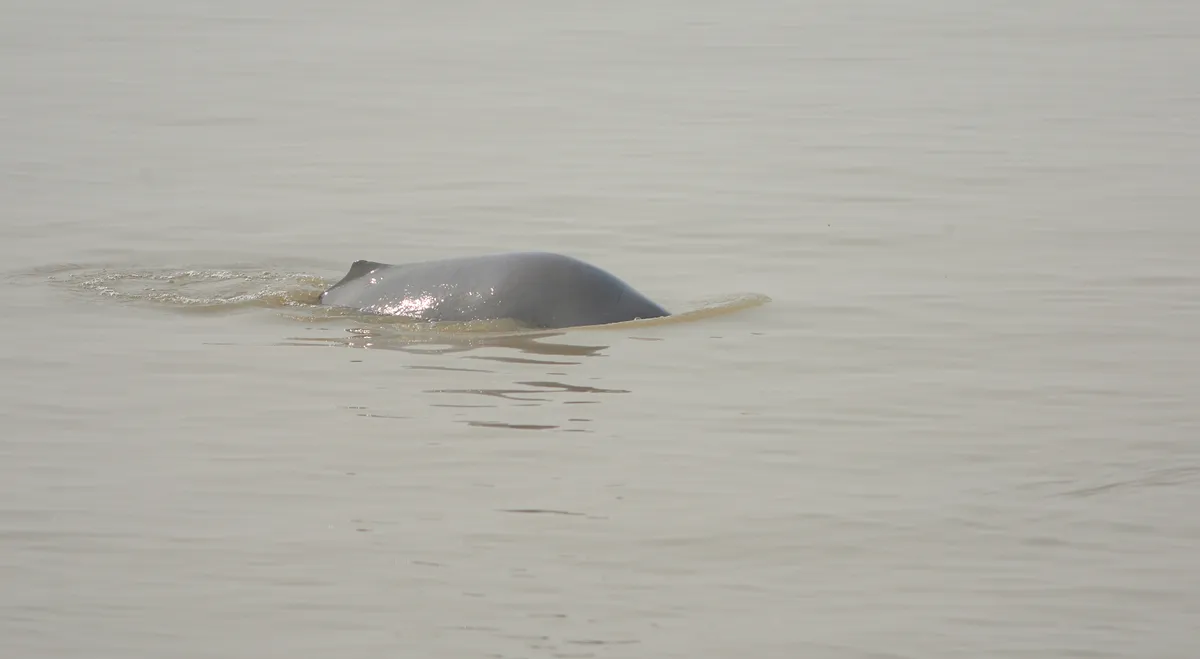
What is echolocation?
All dolphins use echolocation, sensing sound waves in the water to navigate, detect prey and to communicate with each other. Some river dolphins, like the Ganges and Indus river dolphins are essentially blind. Although others do have some sight, they also still mostly rely on echolocation.
What do river dolphins eat?
Among other things such as crabs and turtles, river dolphins depend on migratory fish as a major source of their food. Therefore, they are negatively impacted by the same problems migratory fish face. Besides travelling to and from their spawning areas they also migrate to follow their food. This is why dams and other obstacles to free flowing rivers that block their food fish from spawning also have such a harmful impact on the river dolphins’ survival. The drastic reduction in their food supply has only added to their problems. According to WWF’s Living Planet 2020 Freshwater Index (LPR2020), average population trends for monitored freshwater species appear to be falling steeply (84% decline in 50 years). In fact, almost one in three freshwater species are threatened with extinction.
Please note that external videos may contain ads:
Pink River Dolphins Of The Amazon Rainforest's Hunting Secret | Earth's Great Rivers | BBC Earth
Are river dolphins endangered?
All river dolphins are Endangered or Critically Endangered according to the International Union for the Conservation of Nature (IUCN). Shortly after its status was degraded from “endangered” to “critically endangered” in 2013, the Chinese Government gave the Yangtze finless porpoise the strictest protections available by law in 2014. This means Yangtze finless porpoise has the same conservation concern as the rare Irrawaddy river dolphin.
What threats do river dolphins face?
Megafauna such as dolphins tend to be less resilient to environmental changes because they are top predators of the river system, concentrated effects of toxic chemicals and heavy metals accumulated by creatures lower down the food chain. Additionally, they generally require complex and large habitats, reproduce at a later stage in life and have fewer offspring. The population of the Yangtze finless porpoise has suffered a 50% decline since 2006, and the Irrawaddy dolphin in the Mekong 44% since 1997.

The drop is due in large part to the very same environmental destruction which is contributing to the emergence of zoonotic diseases such as COVID-19 - habitat degradation, water pollution and climate change. Furthermore, water flow modification such as hydroelectric dams, barriers and navigation projects, mercury poisoning from gold mining operations, being killed for use as fish bait, sand mining, over-exploitation and being caught as bycatch have also had significant negative impacts on river dolphin populations.
What is being done to save the river dolphins?
Across Asia and South America, conservationists are working together to secure the future of river dolphins. Without action, these species could become extinct within a lifetime. WWF’s River Dolphin Rivers Initiative aims to stop the decline of river dolphin populations in Asia and South America, and restore and double the most affected populations. In particular, Yangtze finless porpoise and Irrawaddy dolphin populations must be increased by the end of the decade to reduce their risk of extinction. This is their “3000 Dolphin Dream:” 3000 river dolphins extra by 2030, to be on the path to doubling the most threatened populations.
Various NGO’s work together in the South American River Dolphin Initiative (SARDI) to determine the actual population of the Amazon and Tucuxi river dolphins by using drones, satellite tagging and environmental DNA to spot and count individuals in the Amazon to help determine future necessary actions to protect this species. A new interactive dashboard tool combining all available data gives a good insight into the plight of the Amazon and Tucuxi river dolphins.
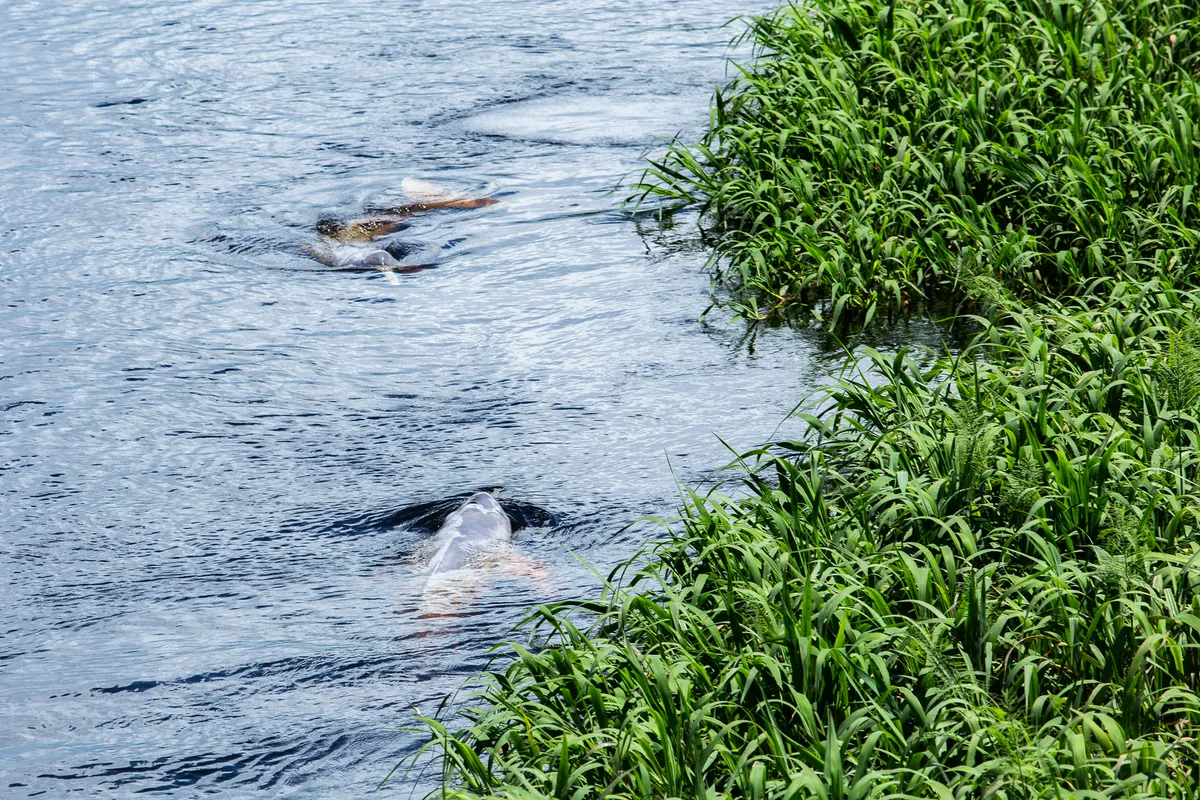
The conservation organisation is advocating for stakeholders along the stretches of Ganges river dolphin habitat to adopt Best Management Practices, and they are implementing environmental flows to sustain the river’s ecological integrity and ecosystem services. There is also work being done to conserve deteriorating river habitats such as reforesting river banks, and reduce the fishing pressure by diversifying the livelihood options of river-dependent communities. It is working with people who live along the river to reduce the use of agricultural and leather industry-related chemicals. In some areas, community fishery management zones are being established to help sustainably manage fish and prevent bycatch (accidental capture in nets).
In China, some porpoises are being relocated to safer parts of the river.
When is World River Dolphin Day?
World River Dolphin Day (also known as World Freshwater Dolphin Day) is on 24 October.
WWF is one of the world's largest and most respected independent conservation organisations, with over 5 million supporters and a global network active in over 100 countries.
WWF's mission is to stop the degradation of the earth's natural environment and to build a future in which humans live in harmony with nature, by conserving the world's biological diversity, ensuring that the use of renewable natural resources is sustainable, and promoting the reduction of pollution and wasteful consumption.
Main image: An Amazon river dolphin in Brazil. © Mike Lane/Getty
